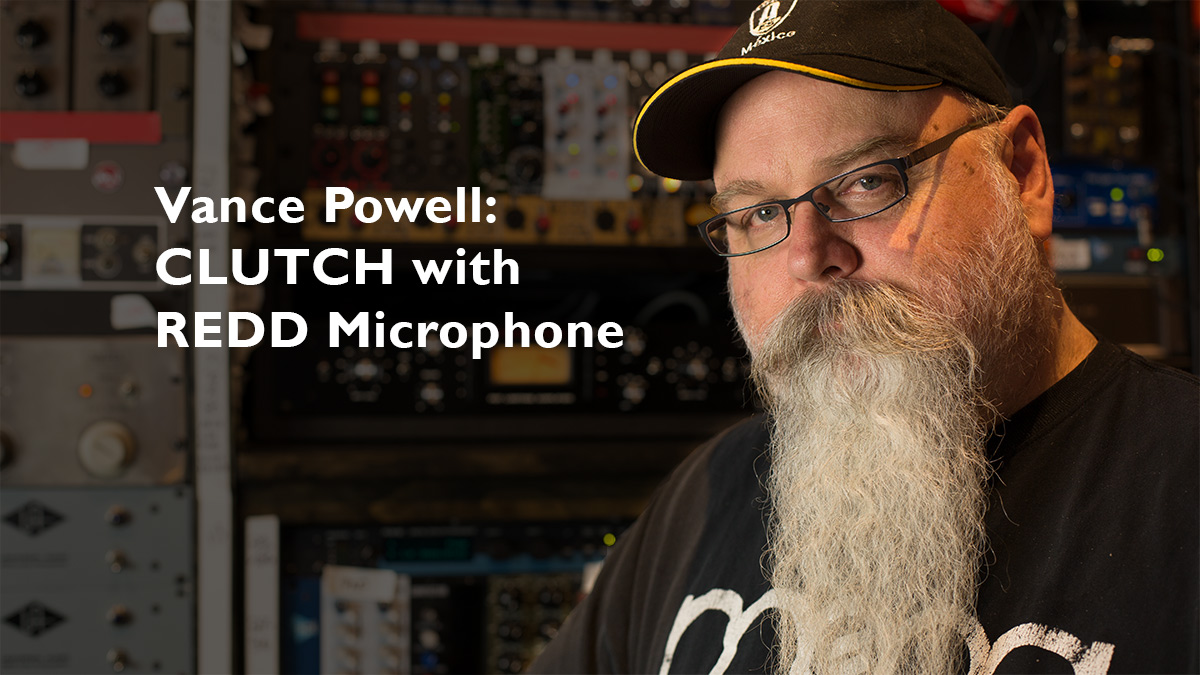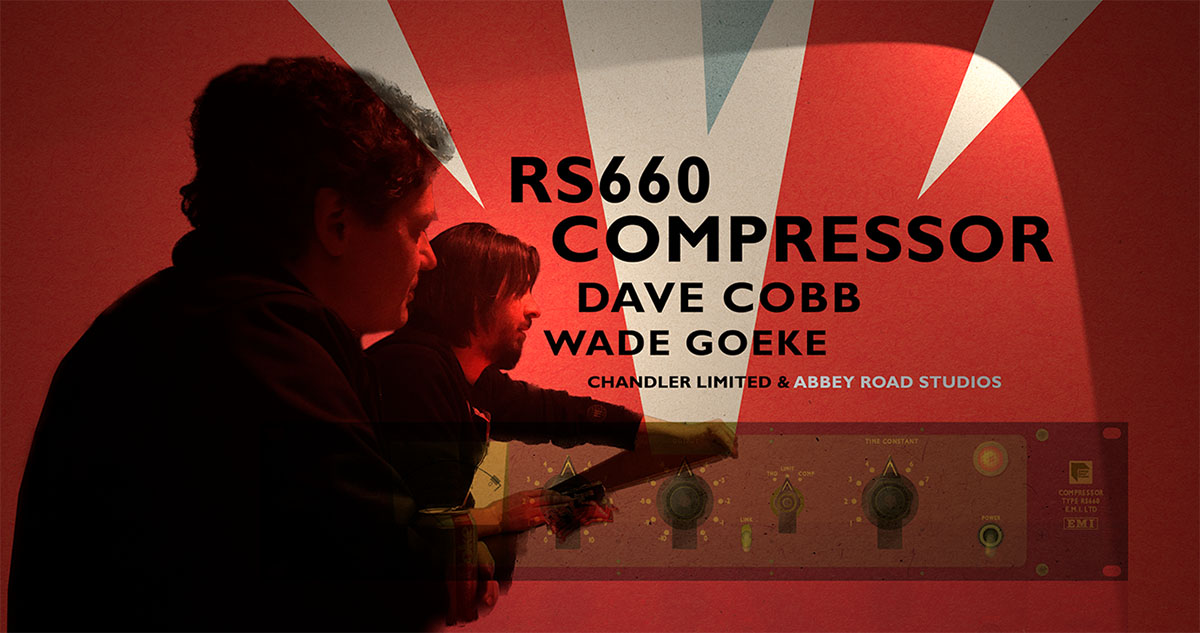Germanium Pre Amp/DI
by: Hugh Robjohns
Sound on Sound – Nov. 2006
Chandler revives a vintage technology in their unique new preamp. We put it to the test…
Chandler products have been quite regular stars among the pages of Sound On Sound and, of those units that have passed through my hands, none have failed to impress. The latest addition to the company’s product range follows a slightly different philosophy to the rest. While it builds cleverly on the intrinsic characteristics of some specific types of vintage gear, the Germanium is no replica of some vintage classic: it is an all-new bespoke design.
Chandler’s new Germanium Preamp is exactly what it says: a straightforward single-channel mic preamp that uses germanium transistors as the active element — you can read more about the history and sonic qualities of such transistors in the ‘Germanium Element’ box — in combination with bespoke input and output transformers. A dedicated DI input is also provided.
The Germanium Element
Since the raison d’être of this new preamp is the use of germanium transistors, we should spend a few moments considering their properties. Active electronics relied exclusively upon the thermionic ‘valve’ or vacuum ‘tube’ since its invention by Lee de Forest in 1906. However, by the 1950s the science of semiconductor materials had advanced to the point where it was possible to make bipolar junction transistors — and compact solid-state electronics became a reality. The first devices employed Germanium as the semiconductor and these were widely used for more than 10 years. However, silicon was found to be better in virtually all aspects. It was also ultimately much cheaper, and so silicon transistors gradually replaced germanium through the 1960s, until silicon was ubiquitous in virtually all applications by the mid-1970s.
Germanium devices are now largely relegated to optical applications, because of their inherent sensitivity to the infrared end of the light spectrum. So you’ll find them in things like fibre-optic interfaces and night-vision equipment. However, there remains a small market for germanium transistors and some are still being made.
Compared with silicon devices, germanium transistors generally have lower gain, with much less consistency between devices. The gain is also more dependent on collector current and ambient temperature than silicon devices. In practice, that means that a lot of germanium-based electronics had a nasty habit of not working when they got hot! However, germanium transistors were able to operate at higher speeds and slew-rates than early silicon devices — an important consideration in the 1960s but largely irrelevant now.
At a technical level, the base-emitter voltage (Vbe) — the control voltage, if you like — for germanium devices is half that of silicon (300mV instead of 600mV) and that means that you can’t just substitute silicon for germanium (or vice versa) without also completely re-engineering the biasing arrangements.
Despite the universality of silicon these days, the ‘germanium period’ coincided largely with a rapid growth of the music industry, and many people still associate classic sounds with germanium-based products like EMI’s first solid-state TG mixers, Neve’s 1053 and contemporary modules, and some of the vintage Fairchild and Telefunken products. Similarly, many of the classic guitarist stomp boxes that date from the 1950s and 1960s also employed germanium devices.
Overview
The Germanium’s power supply is sold separately by most retailers, because it’s capable of powering two preamps and may not be required for all sales. Although this is a sensible option, it may catch out the unwary! The PSU is a 1U-high, half-rack box with only a mains on-off switch and fuse holder on the traditional dark-grey front panel. The mains voltage can be switched between 115 and 230V, but only via an internal switch, requiring the case lid to be removed. Doing so reveals a high standard of construction, with a large torroidal transformer and lots of smoothing and regulation circuitry.
The rear panel carries the IEC mains inlet, a pair of four-pin XLR connectors for DC output, and a pair of 4mm terminal posts. The latter provide access to the chassis and audio earthing points, and are normally linked together. The two four-pin XLRs carry the audio earth, 48V for phantom power, and ±28V to power the audio electronics.
The main unit — the preamp proper — is housed in a 1U rackmounting case that extends roughly 270mm behind the rack ears. The rear panel has just three XLR connectors, none of which are labelled. The audio input is on a female three-pin socket while the output is on a male three-pin connector and the DC power inlet is via a male four-pin XLR — so there really isn’t much scope to misconnect anything!
The Germanium is constructed in a very traditional way, with an internal chassis and separate front-panel escutcheon. Bespoke input and output transformers are bolted to the side panels, and all the switches, controls and connectors are hand-wired to the large central circuit board. A small daughterboard carries the LEDs and circuitry for the meter display.
The literature states that the circuitry involves “classic germanium transistors in class-A”, but the double-sided circuit board was quite disappointing for me, in so far as there is little to see! The active electronics are all encapsulated within a fairly large black case, and there are only a handful of external components, two being sealed relays used to switch the input source and output signal polarity.
The controls on the front panel employ the same vintage TG-style buttons and knobs as other Chandler equipment, although the unusually large LEDs used in the level metering lend a more modern aspect. Starting at the left of the front panel, a recessed toggle switch selects either the rear-panel mic input, or the front-panel quarter-inch unbalanced DI input, which presents an input impedance of 100kOhms. Next comes the Gain control, which is also labelled as the ‘Germanium Drive.’ This is a light-action Elma rotary switch with 10 positions, each offering a 3dB increase in nominal gain. The dial is numbered simply 0-10 but works in a very strange way, even appearing to work backwards under some conditions. This because of a complex interaction with the continuously variable Feedback control.
With the feedback set to zero, the gain range is only 10dB, accepting inputs from about -6 to -16dBu. However, by winding in the feedback, you can expand the gain range to about 40dB, so that the overall input-level range accommodated is from -5dBu at minimum gain (with the 15dB pad switched in), to +65dB at maximum (pad out). The stated maximum output level is +34dBu, although a full set of technical specifications isn’t provided.
Of course, adjusting the feedback does more than change the gain structure: it also alters the amount of harmonic distortion and affects the performance of the amplifier in other ways. In short, winding up the feedback results in more gain, more distortion, more bass and less treble, and a noticeably different character to the signal. This is obviously a deliberate tonal modification system and is the raison d’être of the Germanium preamp. Don’t expect clean and transparent, as that’s not what this box is about at all. It’s all about character — controllable character, and bucket-loads of it!
Three of the four central push-switches have obvious functions. One selects the 15dB input pad mentioned above, another switches on the 48V phantom power (which measured a healthy 48.4V), and the third reverses the output polarity. The fourth button is labelled ‘Thick’ and this engages a kind of bass boost mode that thickens the sound in a flattering, musical way.
The manual — if we can call it that (it comprises five sheets of photocopied A4 paper) — carries a warning about the possibility of instability when using the ‘Thick’ facility. However, it says this is rare and only occurs under a specific set of circumstances, involving transformerless mics and particular gain and feedback settings. It did occur once or twice during the review period, but was easily controlled by changing settings slightly, or switching in the input pad. I presume the issue is one of some form of LF coupling between output and input, and I can appreciate the claims made in the handbook that all attempts to cure the problem changed some of the other desirable attributes of the preamp. In practice, it isn’t really an issue to worry about, and I’d happily put up with it for the sake of the overall sound of this preamp!
A fifth push-button changes the sensitivity of the level meter. The default meter range is from -12 to +3dBu, but pressing the button switches it to span the higher range between +5 and +20dBu. Unusually, the metering is via a single moving dot of light, rather than the more common bar-graph. Combined with the relatively narrow range and fairly fast attack and release times, this gives it a very busy feel that I found a little distracting and difficult to read.
Second Opinion
Used as a guitar DI box, this preamp/DI unit delivers a lovely springy sound that doesn’t choke the note attacks as some lesser preamps tend to do, In general I prefer the tonality when using less front-end gain and turning the Feedback knob clockwise to reduce the amount of negative feedback. Compared with my usual instrument input, the tone is more resilient and also thicker at the low end. As Hugh mentions, the downside of the Germanium transistor circuit is that it is significantly noisier than a well-designed silicon or FET front end. Even using a clean DI’d electric guitar, fitted with passive pickups, some background hiss is audible, but if you add distortion using a pedal or plug-in after the preamp/DI, the noise problem gets significantly worse — all distortion devices work by adding lots of gain, which is just what you don’t need when you have a noisy source! Of course, it could be argued that a box like this makes less difference to distorted guitar tones than to clean ones, in which case it might be just what you need to get a responsive, clean sound without using any other processing other than, possibly, reverb. When using this unit, you probably won’t even need compression, because even without it the sound is lively and warm. Given the price of this unit, I certainly couldn’t justify buying it purely as a DI solution, but if you also need the mic preamp and like what you hear, the instrument DI is a very worthwhile bonus. Paul White
In Use
The Germanium certainly looks vintage, and it feels solid and well made — which it is! The sound immediately conveys a very warm, valve-like quality with an obvious emphasis on the bottom end of the audio spectrum and a slightly thickened, almost compressed quality.
When you first adjust the controls, it quickly becomes obvious that the Feedback knob has more effect on the gain than the Gain knob itself, which is a little disconcerting initially. The Feedback and Gain controls interact to an enormous degree and I couldn’t really find any obvious logic to creating a specific kind of timbre. It’s just a case of twiddling around with the controls until you hit on something that sounds right and also provides the right amount of gain. Sometimes this requires the input pad button to be used too, knocking the source level down so that you can boost the gain and feedback — even if the source level wouldn’t normally require the use of an input pad with a more conventional preamp. A side-effect of this is that you sometimes have to sacrifice noise performance for tonal character, but it’s usually a worthwhile compromise.
With low settings of gain and feedback the preamp sounds fairly clean, but I wouldn’t call it neutral or transparent. As the feedback is wound up it starts to sound noticeably bigger and fatter, and cranking in more gain builds on that.
On vocals, the result is always a big, warm, impressive sound — even when you’re using fairly anaemic mics. However, given the emphasis on the bottom end, I would suggest avoiding very close-miked vocals, especially with mics that have a lot of proximity effect. I found slightly distant placements worked well (18 inches to two feet), especially in nice-sounding rooms.
With high levels of gain and feedback the sound takes on quite a lot of attractive harmonic distortion that makes it sound very full and thick, but at no point does it descend into becoming the kind of rackmounted fuzz-box that would please a guitarist. Having said that, the DI input works well and I found it added a really nice body and weight to the output of my old Roland Jupiter 8 monster synth. There’s more information from Paul White on how the Germanium performs with electric bass and guitar in the ‘Second Opinion’ box elsewhere in these pages.
The Thick button does exactly what it promises — it thickens up the bottom end of the sound quite dramatically. With some sources it adds a magical quality that really works well, while with others it’s too much and muddies things up. But it is a useful facility nonetheless.
In cases where I wasn’t sure quite how strong I wanted the Germanium effect to be, I recorded through a neutral preamp and used the Germanium as a post-production effect. It will accommodate line-level inputs quite happily and can be patched in as an outboard effect for adding the required character and body to an otherwise clean vocal.
Summing Up
The Chandler Germanium preamp is an interesting tool to add to an existing recording chain. I wouldn’t recommend it as a ‘one and only’ preamp — I think it has too much colour for that, making it too restrictive, and it is also a little too noisy. However, for someone who already has a decent recording chain and is looking for something to provide an occasional warm, musical character that is a little different from the usual tube effect gear, this fits the bill neatly.
—Hugh Robjohns






